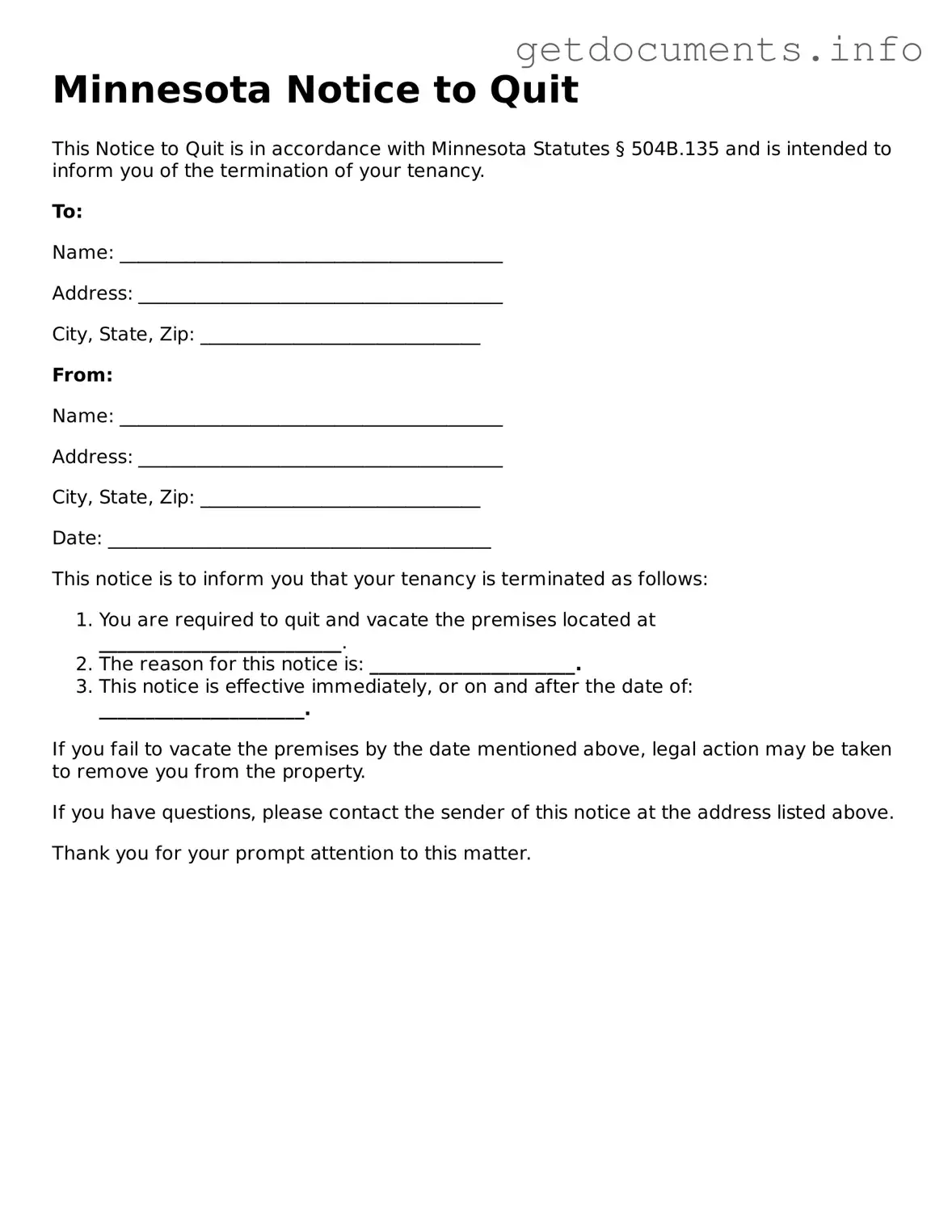The Minnesota Notice to Quit form serves as a crucial document in the landlord-tenant relationship, particularly when it comes to the process of terminating a lease agreement. This form is typically used by landlords to formally notify tenants of their intention to terminate the rental agreement, often due to non-payment of rent or lease violations. It outlines the specific reasons for the termination, provides a timeline for the tenant to vacate the premises, and ensures that both parties are aware of their rights and responsibilities. Importantly, the Notice to Quit must adhere to Minnesota state laws, which dictate the required notice period and the information that must be included. By understanding the components of this form, both landlords and tenants can navigate the often complex landscape of rental agreements more effectively, minimizing misunderstandings and fostering clearer communication. This article will delve into the essential elements of the Minnesota Notice to Quit form, its legal implications, and the steps that both parties should take following its issuance.
